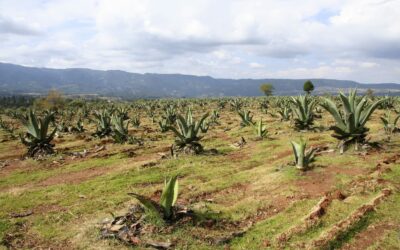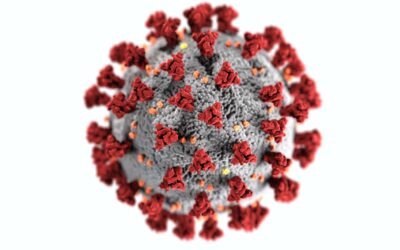Hemp has an ancient history with humans; the cannabis sativa plant has been cultivated for over 6000 years! Today, the EU has approved 65 types of cannabis plants for cultivation. These cannabis varieties don’t contain the psychoactive substance tetrahydrocannabinol. These plants contain less than 0.2% of THC, making them legal in the EU.
What’s more, hemp can be used in a variety of ways, though it’s mainly grown for its leaves, flowers, seeds, and shives. The hemp plant fibres are strong and were once used to produce fabrics used for clothing, canvas sails, and even for rope.
Are you interested in growing hemp plants for industrial cultivation? If so, we’ve put together some information on the cultivation and care of hemp plants. This information is then followed by the type of products that can be made from hemp.
Cultivation Requirements for Industrial Hemp
First, we must let you know that the EU allows only cannabis plant species that contain less than 1% THC. Therefore, you are not allowed to grow cannabis plants that contain more of this psychoactive substance. In addition, only certified seeds can be used. And if you fulfil these requirements, it is legal to produce industrial hemp at home.
First, you’ll need to prepare the soil for hemp seeds. The soil must be deeply tilled and have a pH of 6 or higher. In addition, the soil must be well-draining and have enough organic material to retain moisture. The plants require about 10-13 inches of rainfall during their growth period.
Once the danger of frost has passed, it’s time to direct sow the seeds. Soil temperatures can be about 6 C (42 F) at a minimum. The seeds can germinate in about 24-48 hours in the right conditions. The plants emerge about five to seven days after planting. They grow to about 12 inches tall within three to four weeks.
Male & Female Hemp Plants
It’s crucial to understand that cannabis plants are dioecious, which means they have male and female plants, which produce flowers. If you germinate the hemp from seeds, about half of the plants will be male and half female. However, it is possible to buy seeds that are “feminised.”
Feminised seeds are produced by causing female plants to produce pollen sacs that only have female genetics for self- or cross-pollination. Feminised seeds only produce female plants, which are grown for harvest. These female plants will remain unfertilised.
It is possible for cannabis plants to spontaneously produce male and female flowers. These plants are called “hermaphrodites.” This phenomenon may occur due to genetics and environmental stressors. It’s possible to keep this from happening by ensuring the plants are well cared for. And they should not have to deal with environmental stress during flowering.
Hemp’s Photoperiod
Cannabis sativa is a photoperiodic plant with vegetative and flower phases, requiring periods of darkness and daylight. The flowering occurs when the dark period (nighttime) is about 12 hours long. When the dark time is shorter than this and the light period is longer, the plants remain vegetative and don’t produce flowers.
However, the plant’s photoperiod can be controlled within closed growing environments, such as tents or with a blackout cover.
There are subspecies of cannabis and hybrids that are day-neutral. These are also called auto-flowering and tend to flower even during shorter dark periods.
Hemp Can Be Grown Indoors
Hemp can also be successfully grown indoors in a controlled environment with artificial lighting. Growing in the plants indoors gives you more control of plant growth and flowering. Hemp plants go through four growing stages, including germination, seedling, vegetative, and flowering.
Germinating Hemp Seeds
Germinating hemp seeds is similar to starting other crops from seed. You can use special trays with lids made to germinate seeds of all kinds.
1. Instructions for germinating hemp seeds:
2. Pre-soak the seeds for 8 to 12 hours, which helps improve germination.
3. Temperatures in the indoor environment should be between 18 C (65 F) and 21 C (70 F).
4. Plant the seeds about 1 inch into a moist seed starting mix.
5. You can use a seedling heat mat and thermostat to control soil temperature.
6. Use a humidity dome to manage the germination humidity.
Care for Hemp Seedlings
Once the seedlings have germinated, they require temperatures between 20 C (68 F) to 25 C (77 F). The temperature of the soil can be managed with a heat mat. The seedlings also require a relative humidity between 65 & 70%. Be sure to keep the humidity dome over the seedlings for the first week or two to keep humidity levels at an optimal range.
Next, you must deal with the light in the indoor environment. Light can be provided by high-output LEDS or high-output T5 fluorescent grow lights. The lights should be placed several inches above the seedlings.
You’ll also need to control the light photoperiod for the seedlings. This can be done by keeping the grow lights on for 18-24 hours a day. If the seedlings begin to stretch (become very long and tall), then lower the grow lights, so they’re closer to the plants. Then add more time to the light cycle. You may also want to consider using a timer to automate the lights.
As the seedlings grow, it’s necessary to fertilise them with a water-soluble, nitrogen-rich fertiliser. The fertiliser needs to have a target 3:1:2 ratio at 1/4th the recommended application strength when watering or misting seedlings until it’s time to transplant them.
When the seedlings have rooted, it’s time to transplant them. They will need to be moved to a 4-5 inch c container using a transplant mix. Finally, when the plants have rooted to the bottom of these planters, it’s time to transplant one last time. They should be moved to a larger container, and it’s necessary to use a compost-based potting mix that’s a little heavier than the transplant mix.
As the plants grow, it’s essential to keep the air moving in the indoor environment. This helps keep pests from the plants (including fungus gnats and leaf fungal diseases). The air also keeps the plants from growing too warm.
Summing It Up
Hemp plants require care for successful growth. If you’re growing hemp plants for the first time, it will take some trial and error to find the precise methods for raising healthy cannabis plants.

 Call WhatsApp +1-831-884-3124
Call WhatsApp +1-831-884-3124
 info@californiagrownhemp.ch
info@californiagrownhemp.ch


